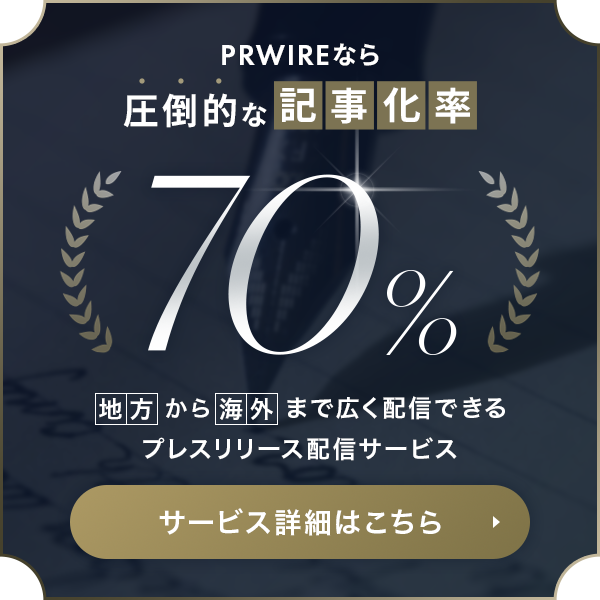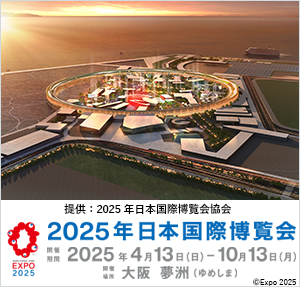C-V2Xは全ての人にとって安全な道路に貢献する
C-V2Xは全ての人にとって安全な道路に貢献する
AsiaNet 78899 (0932)
【ベルリン2019年5月23日PR Newswire=共同通信JBN】
ベルリンで行われた5GAAのライブの実証実験イベント
スマートモビリティー技術は長年かけて開発されてきたが、現在、それが現実のものとなった。「Cellular Vehicle-to-Everything」(C-V2X)は、車両がクラウドだけでなく、他の車両および周辺環境とも直接通信することを可能にする。4G LTEセルラー技術や新興の5G世代の高速・低遅延通信のおかげで、交通は最適化され、排出物は削減される。救急サービス車両はスムーズに走行し、道路使用の弱者を含む全ての人にとって道路の安全性が大幅に向上する。
ベルリンでのライブ実証実験イベントで、5G Automotive Association(5Gオートモーティブ・アソシエーション、5GAA)は、よりスマートで、より安全なモビリティーを深く追求するプレゼンテーションを行い、展開準備が整っている技術を公開した。BMWグループ、ダイムラー、ドイツテレコム、フラウンホーファー研究機構のFOKUSとESK、フォード、ファーウェイ、ジャガー・ランドローバー、ノキア、Qualcomm、ボーダフォン(Vodafone)を含む著名な5GAAメンバーがC-V2X Vehicle-to-Vehicle(V2V)、Vehicle-to-Infrastructure(V2I)、Vehicle-to-Network(V2N)のアプリケーションを実証実験した。
5GAAのマクシム・フラメント最高技術責任者(CTO)は「コネクテッドモビリティーの標準規格はもはや将来へのビジョンではなくなった。ショーで展示するソリューションは現時点で展開準備が整っており、来る5G能力に基づき、業界では大きな勢いがある。C-V2X技術は、歩行者、サイクリスト、モーターサイクリスト、自動車、商用大型トラックにとって安全で健全なドライブ環境のための極めて重要な基盤である。世界規模の実地試験は既に最終段階にあり、最初のソリューションは現在、多数のサプライヤーから入手できる」と語った。
直接短距離通信とモバイルネットワークの両方の使用は、遠隔操縦運転や、Multi-Access Edge Computing(MEC)の機能性を使用した車両間の緊急交通情報の提供を含め、実証実験で紹介された補完的能力を提供する。全ての実証実験は、展開準備ができている技術を使用している。
▽ベルリンで23日に紹介された5GAA C-V2X使用事例に関する要約
1.A.交通管理ソリューション:Signal Phase and Timing(SPaT)と車両に対するRed-Light Violation Warning(RLVW)
赤信号での待ち時間は時間がかかるだけでなく、アイドリング、減速、加速がより多くの汚染物質を排出する。交通信号と車両間の通信は交通流量を向上させるために重要で、事故防止によって交通安全を向上させる。今回の実証実験での運転で、Savari ITSソフトウエアスタックとV2X使用事例を駆動するQualcommの車載ユニットを搭載したBMWグループの車両はSWARCO交通信号と通信し、マルチベンダーでのC-V2Xの準備ができていることを示した。
この使用事例は、ドライバーが次の交通信号をモニターすることを可能にする。車両の中央ディスプレーは現在の信号の状態と、それがどのくらいの時間、変化しないかを示す。Red Light Violation Warning(RLVW)使用事例で、車載アプリケーションは、交通信号の信号タイミングと地理情報とともに、車両の速度と加速のプロファイルを使用する。ドライバーが信号を無視しそうになれば、ドライバーは車両の中で警告を受けることになる。
B.交通管理ソリューション:Emergency Electronic Brake light(EEBL)/Roadworks warning(RWW)
C-V2Xはドライバーに情報を提供するので、ドライバーは間近に迫る交通状況に事前に対応することができる。ダイムラーがサポートするフラウンホーファー研究機構のFOKUSはEmergency Electronic Brake Light Warningを実証実験する。ファーウェイの車載ユニットを装備した2台の車両は加速すると、前方の車両が急ブレーキを掛けることができる。2台目の車両は直ちに警告を受け、低遅延C-V2X通信の利点を実証した。さらに、ファーウェイの沿道ユニットは進行中の道路工事をC-V2Xを介して車両に伝える。訪問者は中央ディスプレーで車両における両方の使用事例を体験し、警告を見ることができる。
2.リアルタイム緊急アラート:Vehicle-to-NetworkおよびNetwork-to-Vehicleのサービス
Vodafone Germanyとフォードは、前方で起きた事故をその発生直後にドライバーに警告することができる(eCall Plusを介して)コネクテッド車両技術(V2X)を紹介した。さらに、このシステムは、救急車が近づいていることを早期に警告し、妨害しないために道路のどちら側に車両が移動すべきかを警告する。交通事故の被害者の生存率は、被害者が単に4分速く治療を受けることができれば、最大40%向上すると、専門家は考えている。
3.実データ収集と送信:MECを介した拡大ネットワーク/車両からネットワークへの機能
安全に関連する情報の超高速で信頼できる正確な送信は生命を救うことができる。Continental、ドイツテレコム、フラウンホーファー研究機構のESK、ノキアはMulti-Access Edge Computing(MEC)技術を活用し、情報がモバイルネットワークを通じてほぼリアルタイムで車両に提供される方法を実証実験した。全てのデータはモバイルネットワークのエッジでプロセスされ、送信時間を短縮した(遅延)。その結果、緊急警告、高解像度マップなどのイベント関連データはミリセカンドで送信され、全面自動運転への過程にある安全走行を向上させる。
4.ネットワークと直接ソリューションの組み合わせはC-V2X技術の頂点を実現
Vodafone Group、ファーウェイ、ジャガー・ランドローバーは異なる通信モード(PC5を介するショートダイレクト、Uuを介する長距離ネットワークベース)を組み合わせることでセーフティークリティカルな使用事例を実証実験する。2段階の警告提供によって、車両はかなり早い時期に同じ合流点に近づく他の車両に気付き、衝突を回避する行動を早く取ることが可能になる。また、危険な車線変更や死角が原因で起きる多数の交通事故は深刻である。C-V2X技術を使用すれば、自動車OEMは警告など「1回限り」の無線アクセスシステムを追加インストールする必要がなく、警告を実装するコストを削減できる。この実証実験は、C-V2Xの価値と準備性に加え、長距離および短距離のダイレクトおよび長距離ネットワーク通信リンクの両方をシームレスに組み合わせる能力を紹介した。特に、この実証実験が示したのは、主要な事故現場であるT字路で、短距離技術からだけでは提供不可能な安全関連情報を提供できる長距離セルラーネットワーク通信の恩恵をコネクテッドカーが受けることである。
5.遠隔操作運転(Remote-Operated Driving)
遠隔操作運転(ROD)は、遠く離れたところにいる人間の運転者が車両運転に介入するべき状況を見込んでおり、自動運転車両への経路を円滑にする。RODは、例えばファーウェイによる低遅延通信装置によって実現され、難しいシナリオでの車両走行を支援する指示ないしはインプットを提供する。ダイムラーがサポートするフラウンホーファー研究機構のFOKUSは、RODが今日までに実現している信頼性を紹介した。
▽5GAAについて
5G Automotive Association(5Gオートモーティブ・アソシエーション、5GAA)はグローバルな業界の枠を超えた組織であり、115のメンバーが将来のモビリティーと輸送サービスのためのエンドツーエンドのソリューションを開発するために協力している。同組織は、先進的な運転と自動化車両のソリューションのために次世代のコネクテッドモビリティーの定義、開発を支援することにコミットしている。
詳細は5GAAのウェブサイト、LinkedIn、Twitterのページを参照。
写真はAP Images(http://www.apimages.com )で入手可能。
▽問い合わせ先
Lisa Boch-Andersen
Senior Director, Strategic Communications & Marketing
Tel: +32-(0)475450972
Mail: lisa.boch-andersen@5gaa.org
Web: www.5gaa.org
Laura Ruiz-Trullols
Communications & Marketing
Tel: +32-(0)483721977
Mail: laura.ruiz@5gaa.org
Web: www.5gaa.org
ソース:5GAA - 5G Automotive Association e.V.
C-V2X Contributes to Safer Roads for Everyone
PR78899
BERLIN, May 23. 2019 /PRNewswire=KYODO JBN/--
5GAA live demo event in Berlin
Smart mobility technology, which we have been developing over the years, is now
a reality. 'Cellular Vehicle-to-Everything' (C-V2X) allows vehicles to both communicate
with the cloud and also directly with each other and their surroundings.
Thanks to 4G LTE cellular technology, as well as the emerging 5G generation of
high speed and low latency communications, traffic will be optimized,
and emissions will be reduced. Emergency services will navigate smoothly and
road safety for everyone, including vulnerable road users, will dramatically enhance.
At a live demo event in Berlin, the 5G Automotive Association (5GAA) presented
a deep-dive into a smarter and safer mobility, giving a sneak peek of the
technologies ready to be deployed. Prominent 5GAA members including BMW Group,
Daimler, Deutsche Telekom, Fraunhofer Institutes FOKUS and ESK, Ford, Huawei,
Jaguar Land Rover, Nokia, Qualcomm and Vodafone, demonstrated C-V2X
Vehicle-to-Vehicle (V2V), Vehicle-to-Infrastructure (V2I) and
Vehicle-to-Network (V2N) applications.
"Connected mobility standards are no longer a vision for the future," says
Maxime Flament, Chief Technology Officer at 5GAA. "The solutions on show are
ready to be deployed today and have huge industry momentum based on the
forthcoming 5G capabilities. C-V2X technology is a key foundation for a safe
and sound driving environment for pedestrians, bicyclists, motorcyclists, cars
and commercial heavy trucks. Global field testing is already in its very final
stages and the first solutions are now commercially available from multiple suppliers."
Using both direct short-range communications and mobile networks offers
complementary capabilities as showcased in the demos, which involve
tele-operated driving and the provision of emergency traffic information
between vehicles using multi-access edge computing (MEC) functionality.
All the demos use technology that is ready to be deployed.
A short summary on the 5GAA C-V2X use cases, showcased today at Berlin:
1. A. Traffic Management Solutions: Signal Phase and Timing (SPaT) and
Red-Light Violation Warning (RLVW) to Vehicle
Waiting at the red light is not only time consuming, but idling, braking and
accelerating release more pollutants. The communication between the traffic
signal and vehicle is important to improve traffic flow, thus increasing road
safety by preventing accidents. During the demo drive, a BMW Group vehicle
equipped with a Qualcomm onboard unit running the Savari ITS software stack and
the V2X use cases, communicates with a SWARCO traffic signal, showing C-V2X
readiness across multiple vendors.
The use case enables the driver to monitor the upcoming traffic light. The
center display of the vehicle shows the current signal phase and how long it
will remain. In the Red Light Violation Warning (RLVW) use case, the
application in the vehicle uses its speed and acceleration profile, along with
the signal timing and geometry information from the traffic signal. If the
driver is likely to run a red light he/she receives a warning in the vehicle.
B. Traffic Management Solutions: Emergency Electronic Brake light (EEBL)/
Roadworks warning (RWW)
C-V2X provides the driver with information so that he or she can adapt to the
upcoming traffic situation in advance. Fraunhofer FOKUS, supported by Daimler,
demonstrate an Emergency Electronic Brake Light Warning: Two vehicles equipped
with Huawei onboard units are accelerating, and the car ahead brakes hard.
The second car instantly receives a warning, demonstrating the advantage of the
low-latency C-V2X communication. Furthermore, a Huawei roadside unit
communicates ongoing roadwork via C-V2X to the vehicle. Visitors experience
both use cases in the car viewing the warnings on the central display.
2. Real Time Emergency Alerts: Vehicle-to-Network and Network-to-Vehicle services
Vodafone Germany and Ford show connected vehicle technology (V2X) that could
alert drivers to an accident ahead, moments after it has happened (via eCall Plus).
Furthermore, the system provides early warning that emergency vehicles
are approaching - and which side of the road other vehicles should move towards
to avoid being an obstruction. Experts believe that survival rates for road accident
victims can be improved by as much as 40% if they receive treatment just four minutes
more quickly.
3. Live data capture and transmission: Expanded network/Vehicle-to-Network capacities via MEC
An ultra-fast, reliable and precise dissemination of safety-relevant information can
save lives. Continental, Deutsche Telekom, Fraunhofer ESK and Nokia demonstrate
how information is delivered to vehicles almost real-time via a mobile network,
utilizing Multi-Access Edge Computing (MEC) technology. All data is processed
at the edge of the mobile network to reduce transmission time (latency).
As a result, event-related data such as emergency warnings as well as high-definition
map data are transmitted in milliseconds, improving driving safety on the path to
fully automated driving.
4. Combined Network and Direct solution enables the pinnacle of C-V2X technology
Vodafone Group, Huawei and Jaguar Land Rover demonstrate safety critical use
cases by combining different communication modes (short direct via PC5 and
longer-range network-based via Uu). The provision of a two-stage warning
enables vehicles to be made aware of other vehicles approaching the same
junction much earlier and allowing action to taken sooner to avoid a crash.
Also, the number of road accidents because of unsafe lane changes and blind
spots are significant. Using C-V2X technology helps automotive OEMs keeping the
cost of implementing such warnings down by not having to install additional
'one-off' radio access systems for such warnings. The demos showcased the value
and readiness of C-V2X and its ability to seamlessly combine both long range
and short-range direct and longer-range network communication links.
Specifically, it was shown that at a T-junction - a key site for accidents -
connected cars benefit from longer range cellular network communication to
deliver safety-related information beyond what alone can be delivered from
short-range technology.
5. Remote-operated driving
Remote-Operated Driving (ROD) smooths the path to automated vehicles,
anticipating situations in which remote human operator can intervene with the
driving of the vehicle. ROD is enabled by low latency communication equipment
e.g. by Huawei to deliver instructions or inputs to the vehicle to help it
navigate challenging scenarios. Fraunhofer Institute FOKUS, supported by
Daimler, showcase the reliability ROD enables already today.
About 5GAA
The 5G Automotive Association (5GAA) is a global, cross-industry organisation
with 115 members working together to develop end-to-end solutions for future
mobility and transportation services. The organisation is committed to helping
define and develop the next generation of connected mobility for advanced
driving and automated vehicle solutions.
For more information, visit 5GAA's website, LinkedIn and Twitter pages.
Picture is available at AP Images (http://www.apimages.com)
Contact:
Lisa Boch-Andersen
Senior Director, Strategic Communications & Marketing
Tel: +32-(0)475450972
Mail: lisa.boch-andersen@5gaa.org
Web: www.5gaa.org
Laura Ruiz-Trullols
Communications & Marketing
Tel: +32-(0)483721977
Mail: laura.ruiz@5gaa.org
Web: www.5gaa.org
Source: 5GAA - 5G Automotive Association e.V.
本プレスリリースは発表元が入力した原稿をそのまま掲載しております。また、プレスリリースへのお問い合わせは発表元に直接お願いいたします。
このプレスリリースには、報道機関向けの情報があります。
プレス会員登録を行うと、広報担当者の連絡先や、イベント・記者会見の情報など、報道機関だけに公開する情報が閲覧できるようになります。










